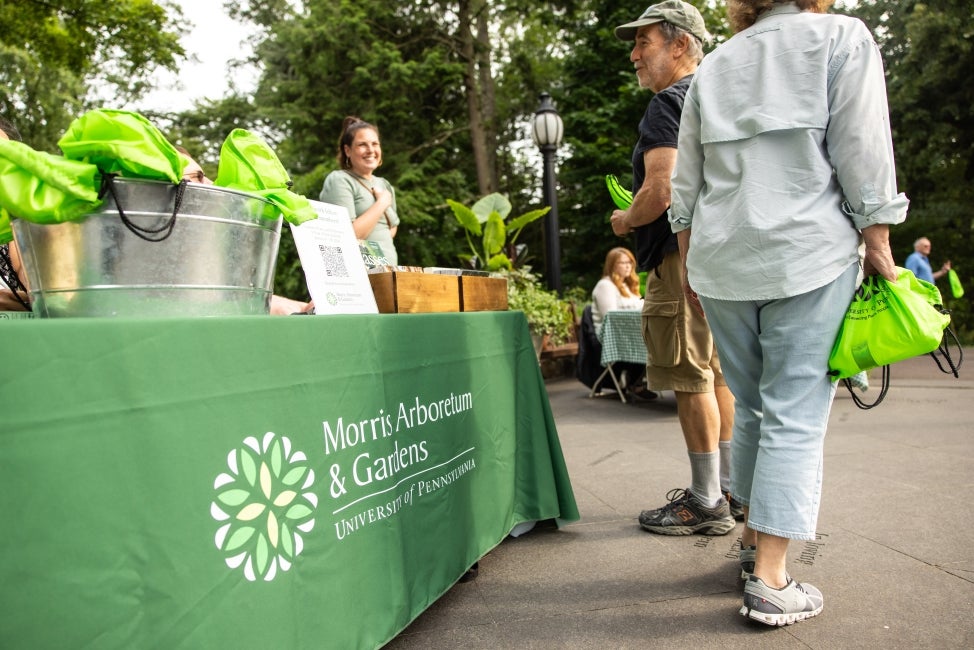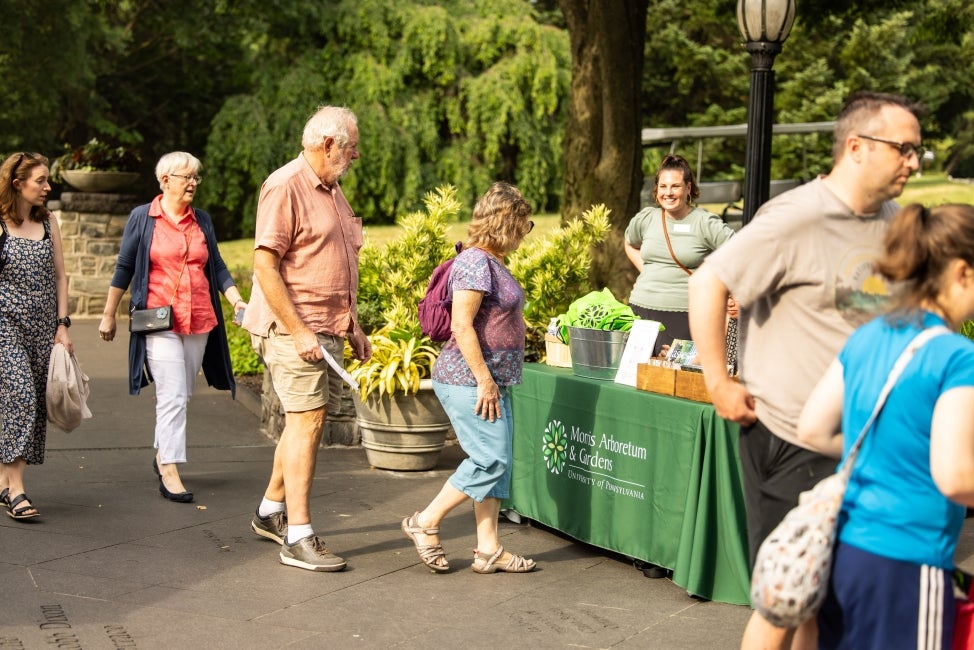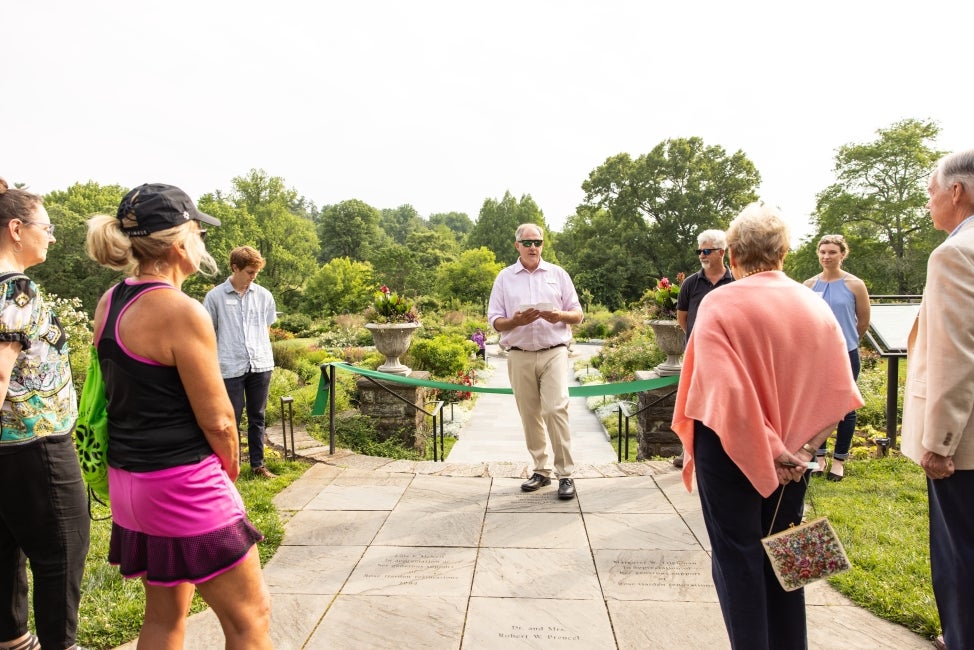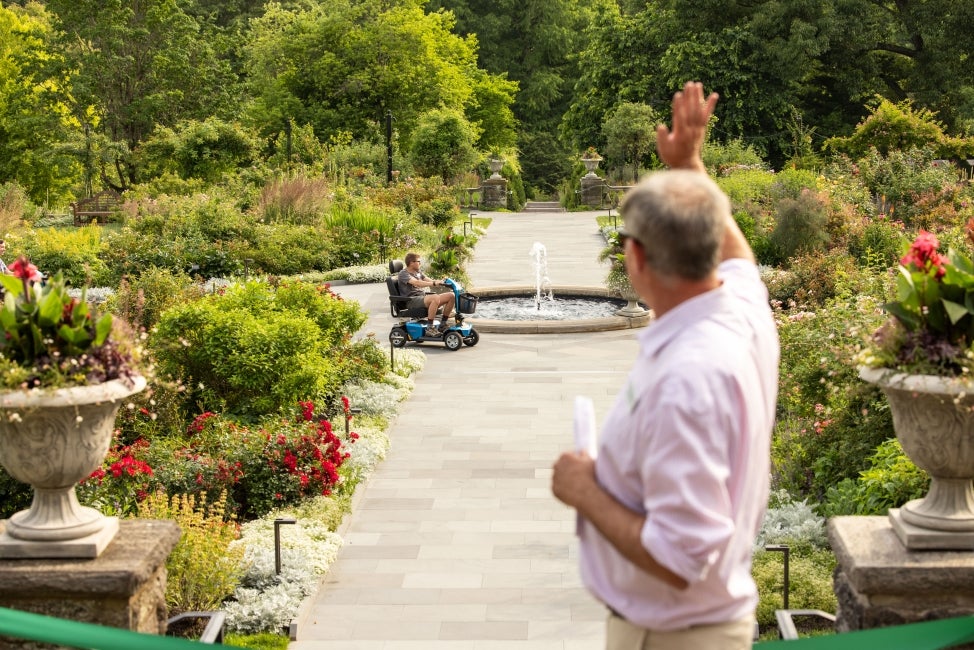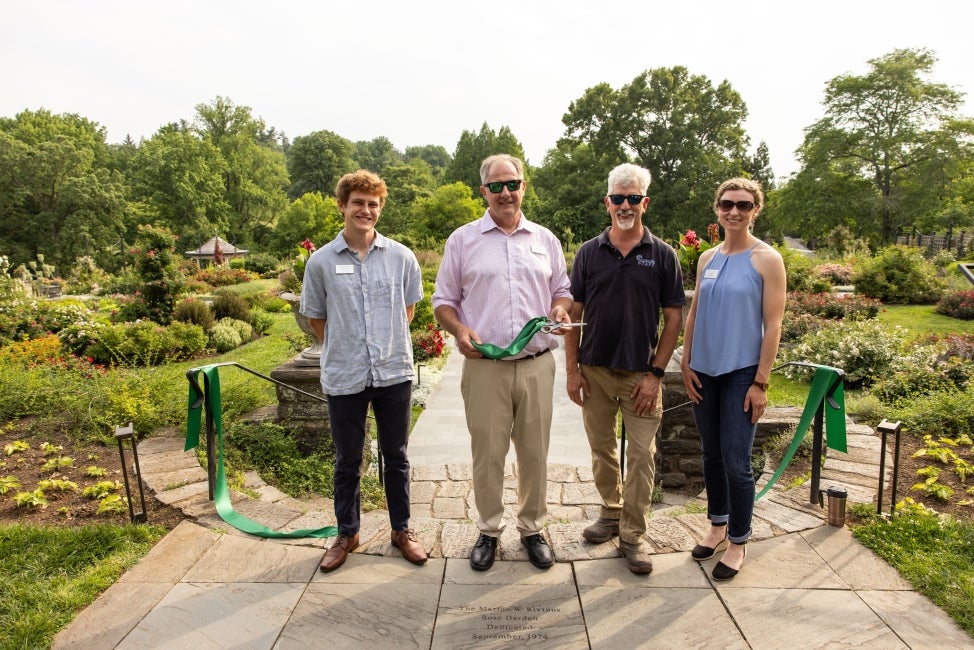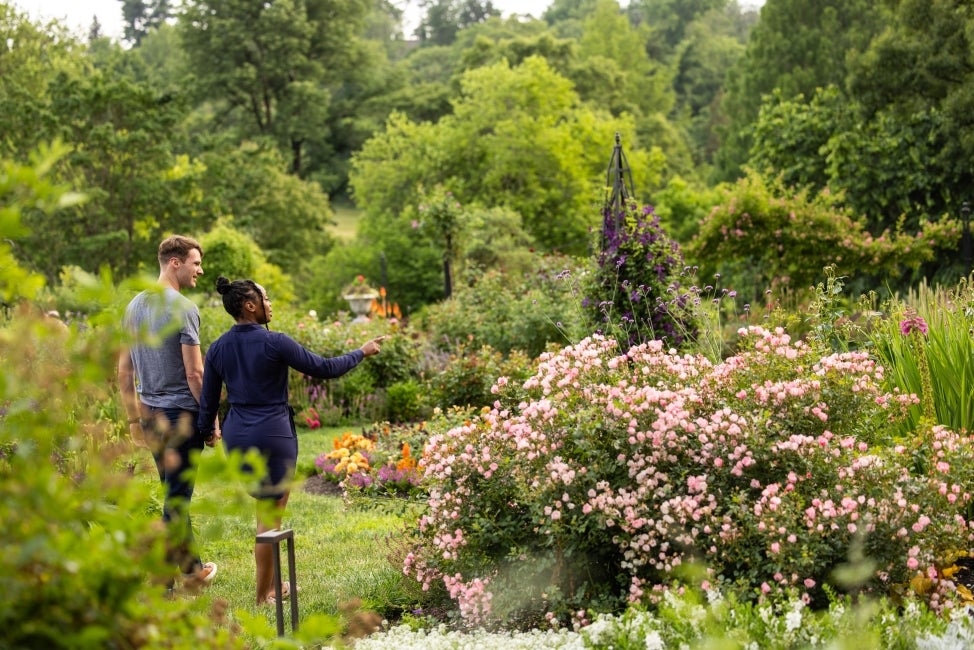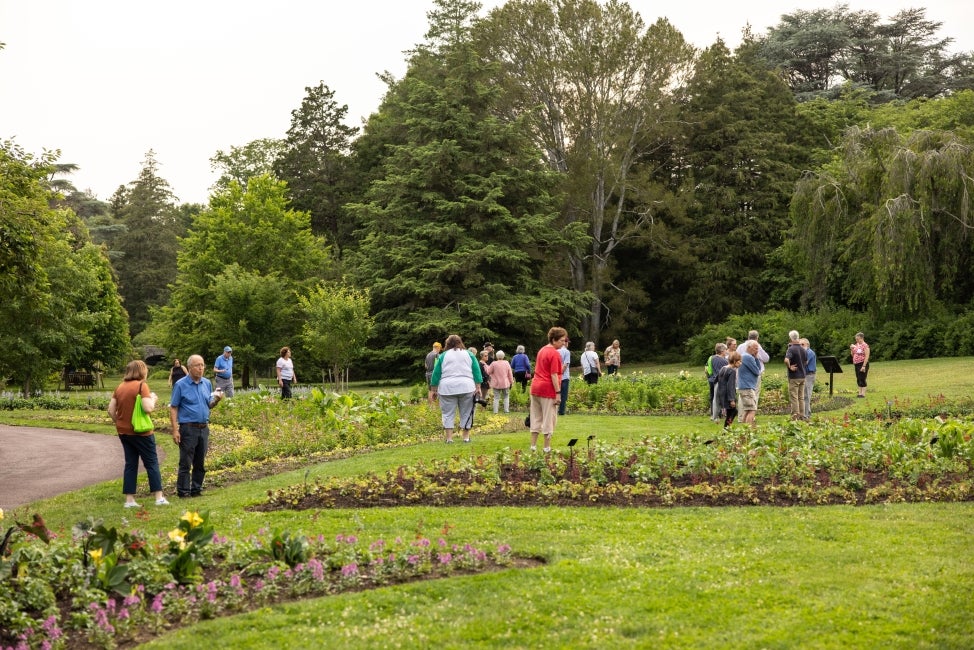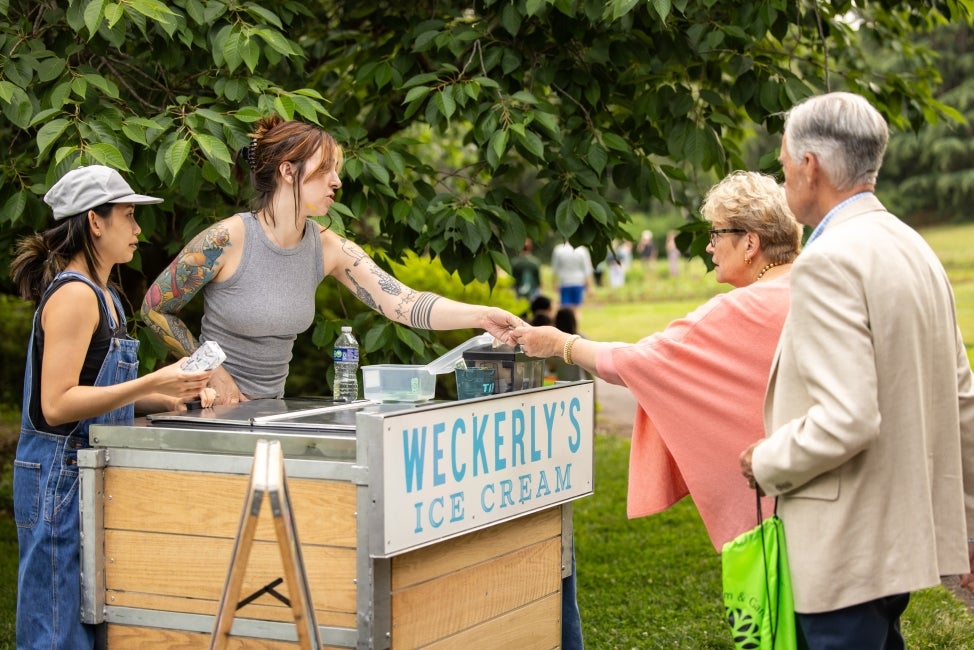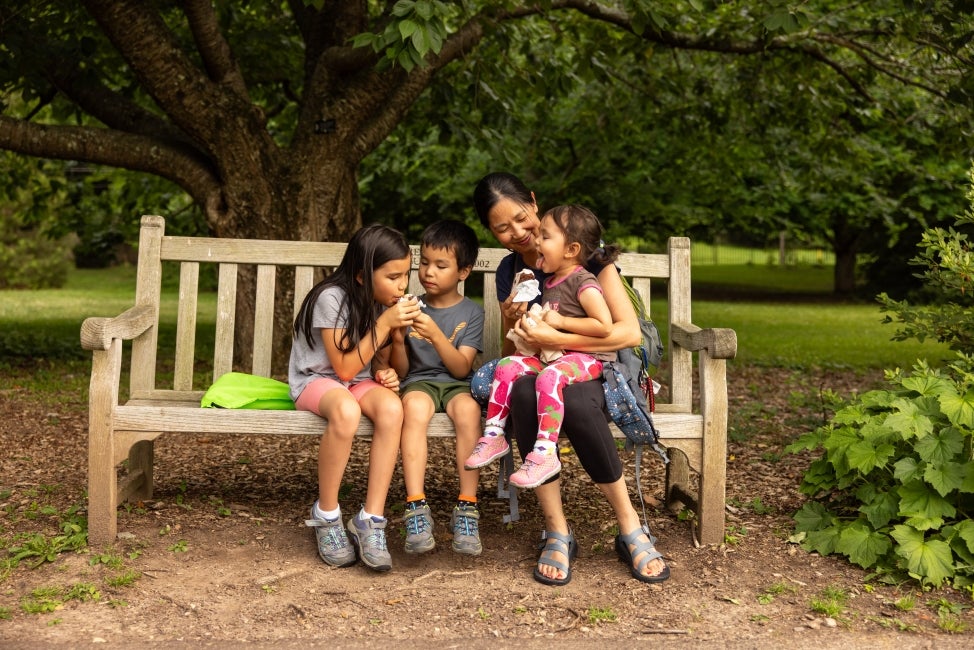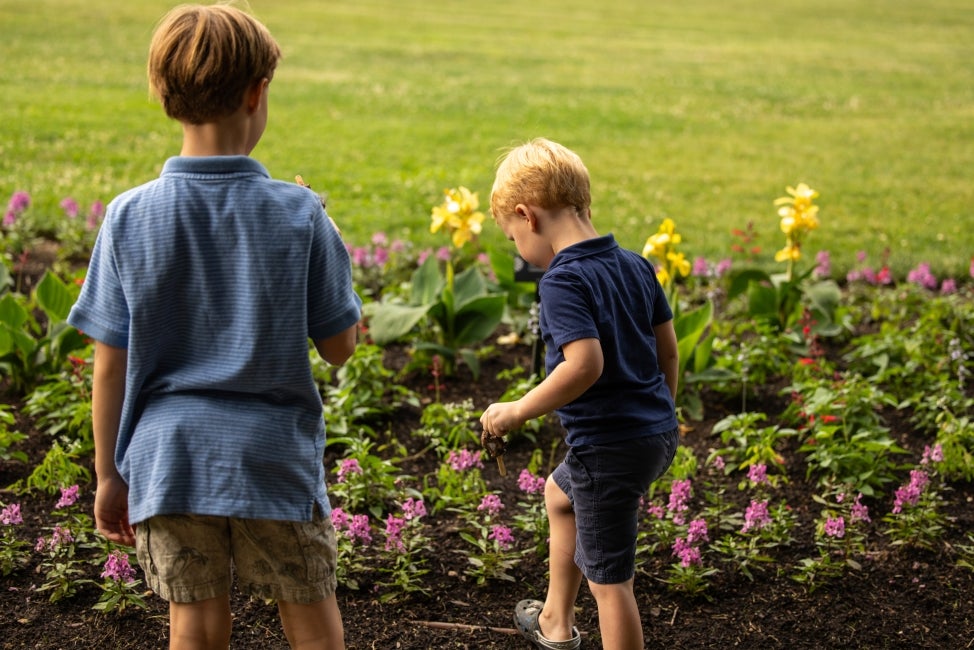#90YearsofMorris: Rose Garden Reopening & History
There has been much to celebrate at the Morris Arboretum & Gardens during our 90th year of being open to the public. Last week, we invited our members to a Member Preview Night that included a ribbon cutting of our newly renovated Rose Garden; a preview of our newest exhibit, Exuberant Blooms: A Pop-Up Garden; and an after-hours stroll through our gardens while enjoying Weckerly’s ice cream. The evening began at the top of the Rose Garden with remarks by Bill Cullina, F. Otto Haas Executive Director of the Morris, followed by a ribbon cutting to mark the official reopening of the beloved garden. See images from Member Preview Night at the bottom of this page.
In late 2022, ground was broken when the Rose Garden’s bluestone walkway project began. Permeable bluestone hardscaping was installed, greatly enhancing the appearance and accessibility of our iconic garden. There is also a flat accessible entrance, which supports our new electric scooters available for visitors to check out at the Widener Welcome Center, along with beautiful new landscape lighting and the replacement of pipes in the fountain.
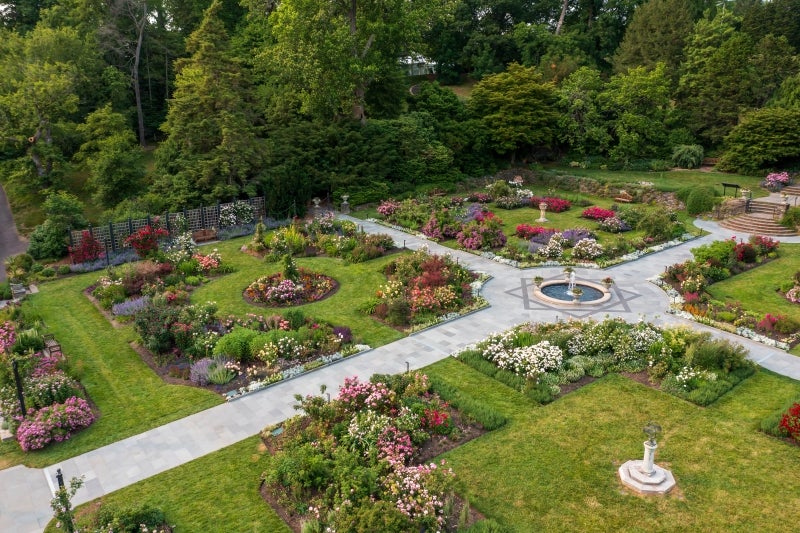
The Morrises created what would eventually become the Rose Garden in 1888, making it one of the oldest features of the Morris estate. In 1909, Lydia Morris's seat and Summer Pavilion were constructed by Pringle Borthwick. In 1924, Lydia transformed the mixed garden of fruits, vegetables, flowers, a few roses, and a specimen chestnut tree into a garden of mainly roses. Elegant stone steps were constructed at the upper entrance, along with the Rock Wall Garden.
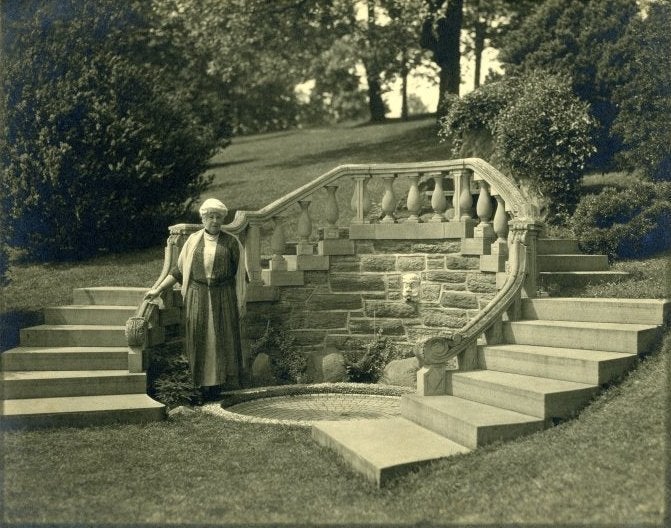
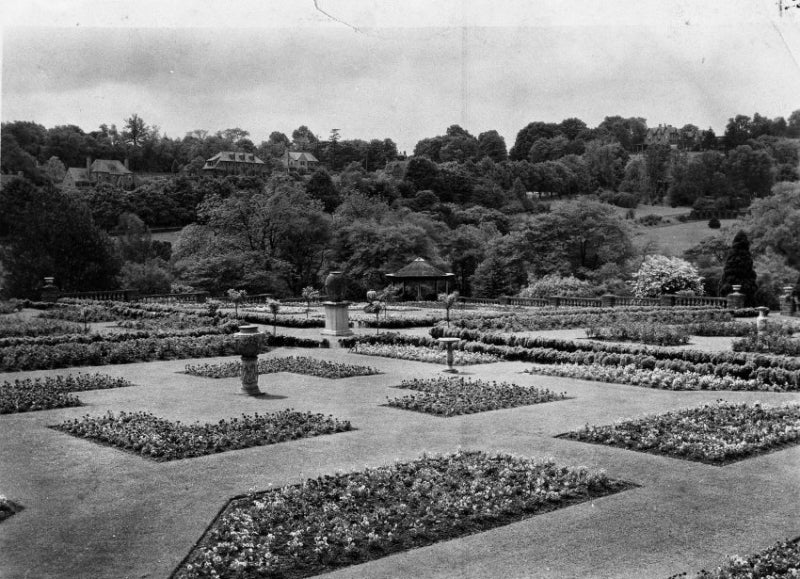
By the mid-1960s, the Rose Garden was showing dramatic signs of neglect. Major restorations began in 1971, including new plumbing in the fountain and restoring the balustrades. Florally, Jackson & Perkins and Conrad-Pyle donated 800 roses to the restored garden, and a number of new cultivars were introduced. In 1973, the Rose Garden was rededicated and renamed in honor of Marion W. Rivinus, the first president of the Morris Arboretum Associates and a member of the Advisory Board of Managers.
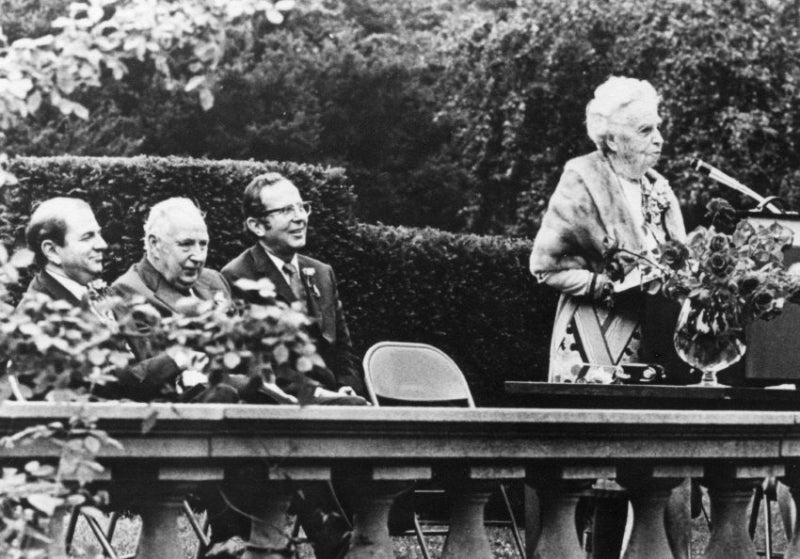
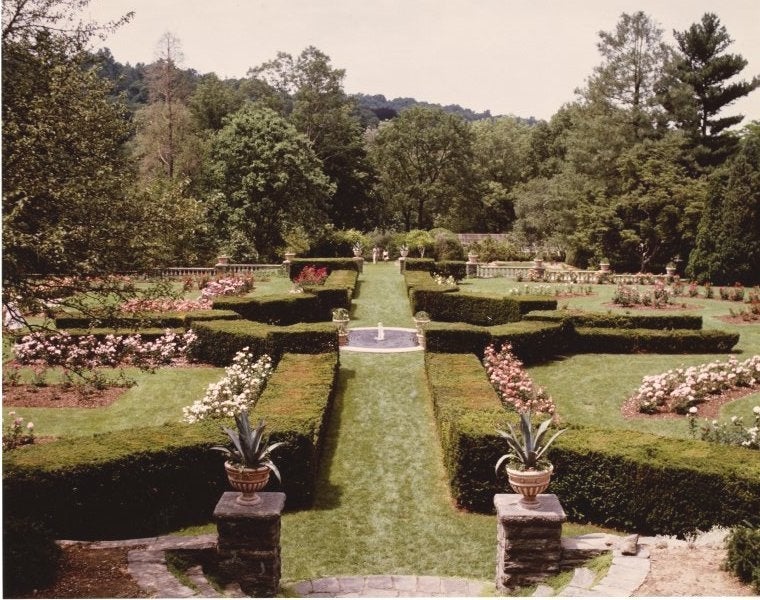
Once a monoculture of roses, the Rose Garden today contains a mix of roses, perennials, annuals, and woody plants, with height elements and garden ornaments added to create a look reminiscent of the Victorian era. In 2006, a reproduction of an original urn was placed in the Rose Garden. The urn, which was severely cracked and chipped, was discovered in the Bloomfield Farm barn. There was no indication that it had been part of the Rose Garden during the Morrises’ time until an old sepia-toned photo from 1926 was discovered. With the help of Campania International, Inc., the urn and its pedestal were pieced back together, and a replica of the original was created. Today, it once again graces a quadrant of the Rose Garden.
